Hukam Khan isn’t sure how old he is, but his beard is long and white, and when he came to Pakistan 40 years ago fleeing an earlier war in Afghanistan, his children were small, stuffed onto the backs of donkeys and dragged across rugged mountains to the safety of northwestern Pakistan.
Back then the war was against the former Soviet Union and Khan was among more than 5 million Afghans forced to become refugees in Pakistan, driven from their homes by a bombing campaign so brutal it was referred to as a “scorched earth” policy.
After four decades of war and conflict, more than 1.5 million Afghans still live as refugees in Pakistan, feeling abandoned by their own government, increasingly unwelcome in their reluctant host country and ignored by the United Nations.
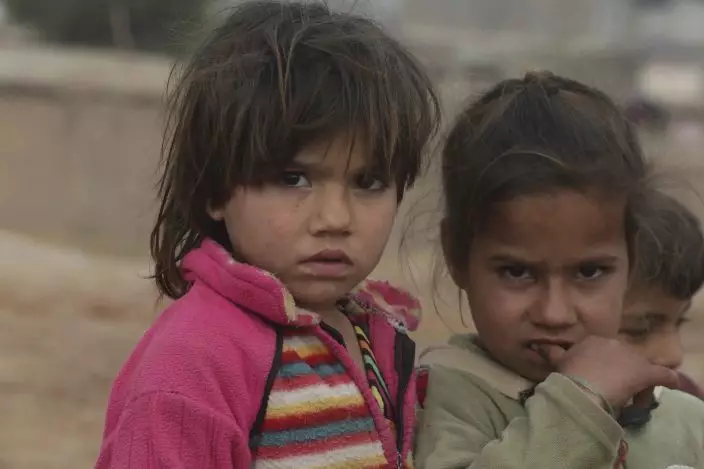
In this Thursday, Feb. 13, 2020 photo, Afghan refugee children who fled their country, walk in the Kabobayan refugee camp, Peshawar, Pakistan. After 40 years, more than 1. 5 million Afghans still live as refugees in Pakistan, feeling abandoned by their own government, increasingly unwelcome by their reluctant host country and ignored by the United Nations. (AP PhotoMuhammad Sajjad)
Now, for the first time in years, there’s a faint possibility they might eventually return home. The United States and the Taliban appear to have inched closer to a peace deal, agreeing as a first step to a temporary “reduction in violence.”
If that truce should hold, the next step could be a long-sought-after agreement between Washington and the Taliban to end Afghanistan’s current war, now in its 19th year. The agreement would return American troops home and start negotiations between the warring Afghans to bring peace to their shattered country.
Against the backdrop of a possible peace deal, Pakistan is hosting a conference Monday attended by U.N. Secretary-General Antonio Guterres to recognize 40 years of Afghans living as refugees. Also attending the conference in the capital, Islamabad, is the U.N. High Commissioner for Refugees Filippo Grandi, whose job would be to help the Afghans return home.
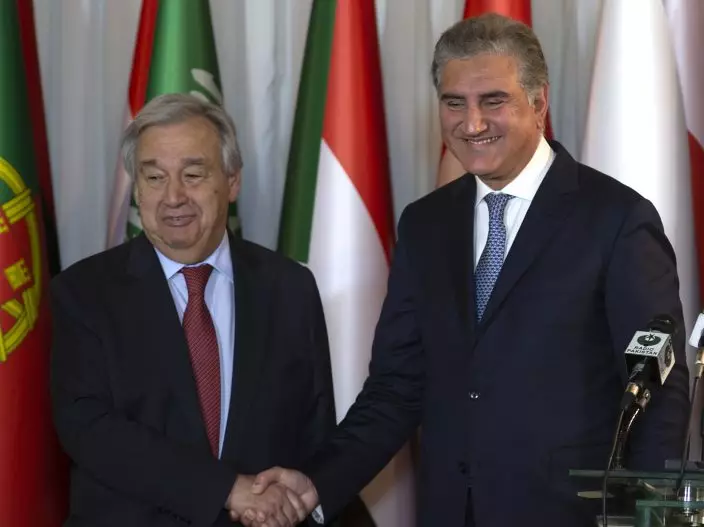
In this Sunday, Feb. 16, 2020 photo, U.N. Secretary-General Antonio Guterres, left, shakes hands with Pakistani Foreign Minister Shah Mahmood Qureshi after a joint press conference at the Foreign Ministry in Islamabad, Pakistan. After 40 years, more than 1.5 million Afghan refugees still live in neighboring Pakistan. They feel abandoned by their own government, increasingly unwelcome in their reluctant host country and ignored by the United Nations. Pakistan hosting a conference on Afghan refugees, attended by Guterres. (AP PhotoB.K. Bangash)
It won’t be easy.
Many refugees have already tried going back — lured by promises of help and hope from the international community and from Afghan President Ashraf Ghani — only to find there was neither food nor shelter for them. Many also discovered they were no longer welcome in the villages they had left decades earlier.
Disillusioned, they returned to Pakistan and to Iran, while tens of thousands of other Afghans paid smugglers and risked their lives to escape to Europe. From there, many were later loaded on planes and returned to war-ravaged Afghanistan.
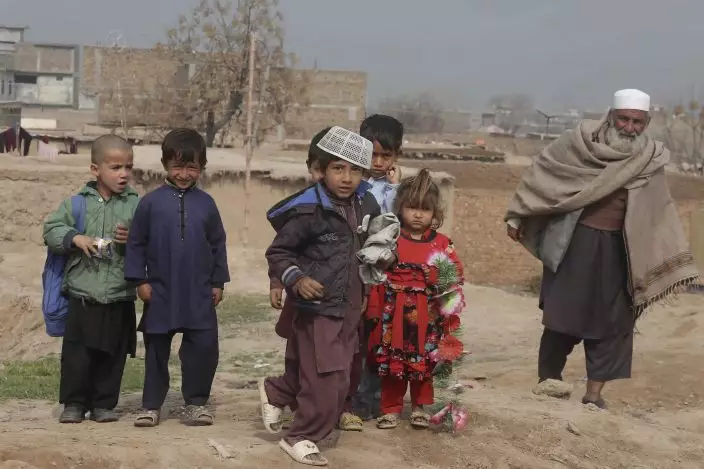
In this Thursday, Feb. 13, 2020 photo, Afghan refugees walk in the Kabobayan refugee camp, Peshawar, Pakistan. After 40 years, more than 1.5 million Afghan refugees still live in neighboring Pakistan. They feel abandoned by their own government, increasingly unwelcome in their reluctant host country and ignored by the United Nations. Many refugees have already tried going back to their homeland — lured by promises of help and hope from the international community and from Afghan President Ashraf Ghani — only to find there was neither food nor shelter for them. (AP PhotoMuhammad Sajjad)
Grandi called the forced return of refugees from Europe “shameful" in an interview with The Associated Press on Sunday.
“I do ... fervently hope that the countries like Iran and Pakistan, who have hosted so generously ... don't take their example from much richer countries that are shutting borders, not only to Afghans, but to many other refugees,” he said.
While the specter of a U.S.-Taliban peace deal raises hope that the refugees will eventually return home, Grandi said, "I think this time around, the people who are still left outside will be very cautious in their judgment. They would want to have guarantees that it can be sustainable."

In this Sunday, Feb. 16, 2020 photo, U.N. High Commissioner for Refugees Filippo Grandi, talks to the Associated Press in Islamabad, Pakistan. After 40 years, more than 1. 5 million Afghans still live as refugees in Pakistan, feeling abandoned by their own government, increasingly unwelcome by their reluctant host country and ignored by the United Nations. Grandi called the forced return of refugees from Europe “shameful" in the interview on Sunday. (AP PhotoB.K. Bangash)
Another challenge will be raising the vast sums of money needed to help return home not only refugees abroad, but also the millions of Afghans who are internally displaced inside their own country. The world has grown tired of sending money to a country with such endemic corruption, which has driven poverty levels up despite billions of dollars in aid since 2001.
Just last month, a U.S. government watchdog said the Afghan government was more interested in ticking off boxes to demonstrate compliance than making real inroads to curb corruption.
Poverty levels in Afghanistan are climbing. In 2012, 34% of Afghans were listed as below the poverty level, living on $1 a day. Today, that figure has risen to 55%.
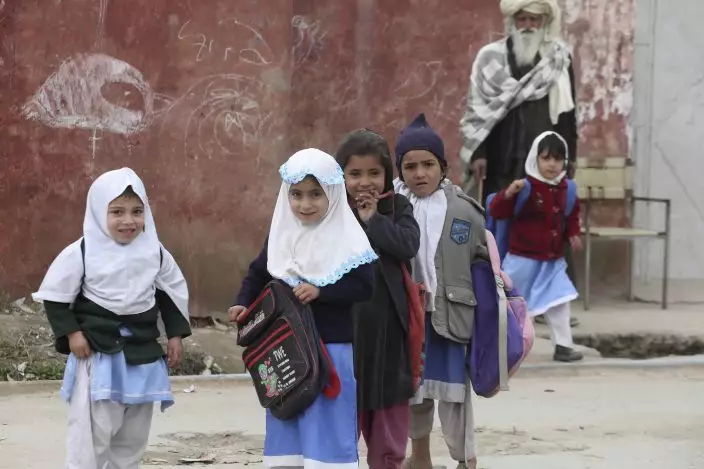
In this Thursday, Feb. 13, 2020 photo, Afghan refugee schoolgirls leave their school in the Kabobayan refugee camp, Peshawar, Pakistan. After 40 years, more than 1.5 million Afghan refugees still live in neighboring Pakistan. They feel abandoned by their own government, increasingly unwelcome in their reluctant host country and ignored by the United Nations. (AP PhotoMuhammad Sajjad)
Khan, the Afghan refugee in Pakistan, now has grown children who have children of their own. He said he blames the overwhelming poverty in his homeland on a corrupt leadership.
“To tell you the truth, lots of money came to Afghanistan and every influential person, even the mullahs, stole that money," said Khan. ”The leaders are all traitors, they betrayed Afghans. The children of poor people got killed, while no leader lost his son.”
Khan said he had a message for Guterres and for Grandi.

In this Thursday, Feb. 13, 2020 photo, an Afghan refugee girl plays in the Kabobayan refugee camp, Peshawar, Pakistan. After 40 years, more than 1.5 million Afghan refugees still live in neighboring Pakistan. But for the first time in years, there’s a faint hope of returning home. That's because the United States and Afghanistan’s powerful Taliban militants have inched closer to a peace deal. (AP PhotoMuhammad Sajjad)
“We don’t ask for much,” he said, looking out over the sunbaked mud and straw homes in the camp where he's lived for 40 years. Located on the edge of Peshawar, the capital of Pakistan’s Khyber Pukhtunkhwa province, the refugee camp is only about 30 kilometers (20 miles) from the border with Afghanistan.
Among locals, the camp is known as Kabobyan Camp, named for the many kabob shops that sprung up around it, most of which have long since disappeared.
“First we ask for peace," said Khan, surrounded by dozens of children dressed in tattered clothes. None were wearing socks despite the chilly February morning, their feet and hands caked in mud.
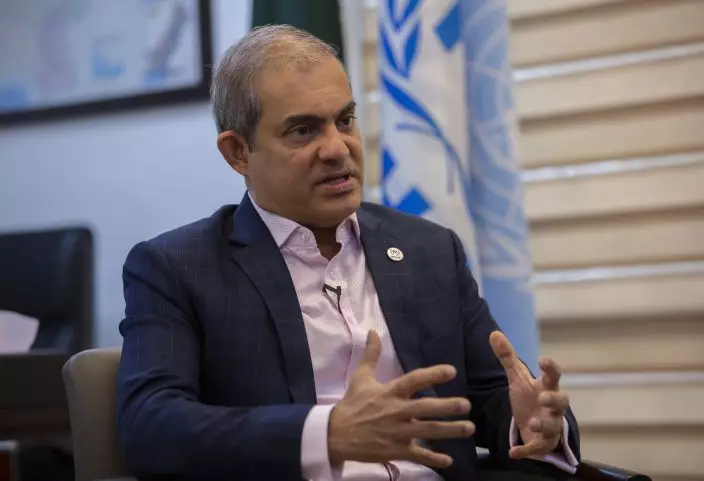
In this Friday, Feb. 14, 2020 photo, Indrika Ratwatte, the U.N. human rights organization's regional director for Asia, gives an interview in Islamabad, Pakistan. After 40 years, more than 1.5 million Afghan refugees still live in neighboring Pakistan. Ratwatte told The Associated Press in the interview last week that Afghan refugees have little faith in their government or international organizations. (AP PhotoB.K. Bangash)
“When there is peace, we should be provided with land on which we can build our homes first. Then we need to have food, and then we need to be able to build our schools, our shops and our mosques," he said.
Indrika Ratwatte, the U.N. human rights organization’s regional director for Asia, told the AP in an interview last week that Afghan refugees have little faith in their government or international organizations.
Khan’s request for land is reasonable, Ratwatte said, explaining how the U.N. wants to set up 20 zones throughout Afghanistan that would offer returning refugees land to start anew, as a kind of prototype.

In this Thursday, Feb. 13, 2020 photo, Afghan refugee boys fight in a refugee camp, in the Kabobayan refugee camp, Peshawar, Pakistan. After 40 years, more than 1.5 million Afghan refugees still live in neighboring Pakistan. They feel abandoned by their own government, increasingly unwelcome in their reluctant host country and ignored by the United Nations. (AP PhotoMuhammad Sajjad)
“We know how resilient Afghans are,” Ratwatte said. “If you give them that small opportunity, they will make it work. They will make it work. So we have to really ‘walk the talk' on the land allocation."
Shah Wali, another elderly refugee, left his home in Surkhrud in Afghanistan’s eastern Nangarhar province almost 40 years ago. He tried returning, but found nothing left. What wasn’t destroyed by war had been taken by neighbors and thieves.
But even the faint chance of peace has him hopeful.
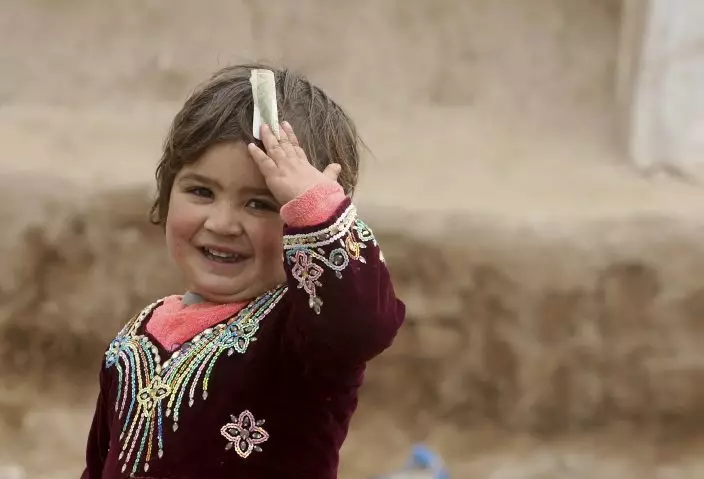
In this Thursday, Feb. 13, 2020 photo, an Afghan refugee girl holds a small banknote in the Kabobayan refugee camp, Peshawar, Pakistan. After 40 years, more than 1.5 million Afghan refugees still live in neighboring Pakistan. They feel abandoned by their own government, increasingly unwelcome in their reluctant host country and ignored by the United Nations. (AP PhotoMuhammad Sajjad)
“Give us peace and then we will go back,” he said. “Who doesn’t want to back to their homeland?"


